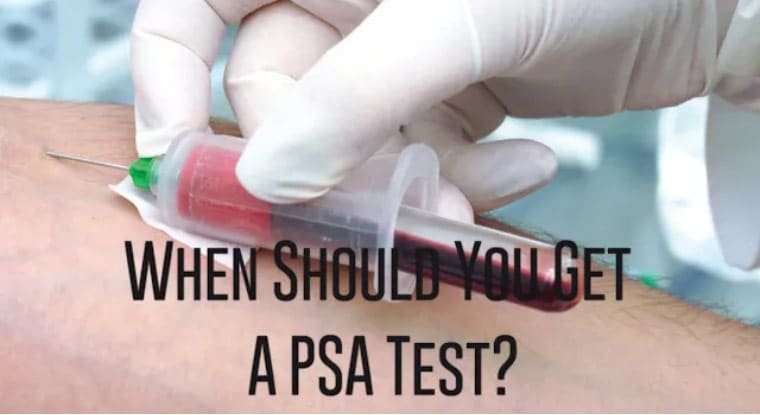Discover Dr. Ketan Kapadia’s Commitment to Urology Advancements. Learn How His Drive Shapes Positive Changes in Patient Care!
Continue readingWhat is the first sign of bladder cancer? with Dr. Ketan Kapadia
Why Southerners Have a Higher Risk of Kidney Stone
I am Ketan Kapadia. I’m with Advanced Urology Institute and a board certified urologist.
 Obviously the heat is going to play a major role, a lot of it has to do with our diet unfortunately as well. [As with] an American diet, we just don’t eat very well, we’re all a little heavier and that also increases the risk of kidney stones as well.
Obviously the heat is going to play a major role, a lot of it has to do with our diet unfortunately as well. [As with] an American diet, we just don’t eat very well, we’re all a little heavier and that also increases the risk of kidney stones as well.
The interesting thing here in Florida, which isn’t talked about very much and this is sort of the holistic treatment of the patient in urology, which is we get a lot of men who have prostate problems who start cutting back on their fluids because they don’t want to get up at night; And when you start cutting back on fluids and not getting up at night, now you’re at more risk of [getting] stones. We see a lot of older guys who come in with kidney stones for the very first time because they got a prostate problem as well and that hasn’t really been addressed.
Same with women who have overactive bladder. First thing most people do is they start cutting back their fluid so they’re not having to run to the bathroom all the time. Again, you cut back your fluid and now you’re living in Florida in the heat, you’re going to get kidney stones. So a lot of doctors will be more than happy to just get rid of your stone and have the surgery [but] I’m also interested in preventing that next stone. Part of that is getting twenty-four (24) hour urines, seeing why you’re making stones, addressing all the overactive bladder problems and prostate problems because I don’t want you to end up having more stones. I’m happy to operate and take out stones, that’s fun, but it’s my obligation to help prevent [it from happening agan].
What is a Vasectomy?
Quick and highly-effective
A vasectomy is a quick, 15-to-30-minute procedure and you can return home the same day. Designed to be a permanent form of contraception, a vasectomy is extremely effective in preventing pregnancy — nearly 100 percent. It is one of the most effective methods of birth control you can find. Vasectomy — also called male sterilization — is meant to protect against pregnancy permanently, so it’s super effective once you are past the first three months following surgery when the semen has become sperm-free.
After the procedure, pregnancy is prevented round-the-clock for the rest of your life. Once the doctor confirms that you no longer have sperm in your semen, then you don’t to do anything else to prevent pregnancy.Of course there is a very slim chance of the cut ends of the tubes growing back together after the procedure, making it possible to cause a pregnancy. That, however, very rarely happens.
Types of vasectomy
The vasectomy procedure involves cutting and blocking or partially removing both ends of the vas deferens (the sperm duct). Once that is done, sperm traveling from the testes can no longer reach the semen and form part of the ejaculate. Two types of vasectomies exist: the no-scalpel method and the incision method. The no-scalpel (no-cut) technique has a lower risk of infection and complications and generally requires a shorter recovery time. Because it’s classified as a minor surgical procedure, a vasectomy is often done in the doctor’s office with the patient under local anesthesia. It’s only in a small percentage of men where the procedure is performed in the operating room with general anesthesia or sedation — either due to the results of a doctor’s physical exam or patient preference.
Doesn’t hurt as much as often perceived
Vasectomy is a safer, minimally-invasive birth control method and a more effective procedure compared to tubal ligation. Guys generally tolerate it better than women do with tubal ligation. While you will experience a sharp sensation when the numbing medication is applied with a small needle, there should be no further pain after that. If you experience any further discomfort, inform your doctor so more of the numbing medication may be given or action is taken to alleviate the discomfort. Most men find vasectomy less painful than they anticipated, although a mild swelling and soreness may be experienced after the procedure.
Recovery after a vasectomy
Some mild swelling and discomfort is to be expected for a few days after the procedure, but almost always is gone completely by the end of the first week. It’s recommended that you take 1-2 days off work to reduce your activity level and get ample time to recover — although men with physically strenuous jobs may require a longer break from work. For the first 48 hours after the procedure, keep your activities limited and apply cold packs to your scrotum 3-4 times a day, with each application lasting for about 20 minutes. Wear supportive underwear until the discomfort subsides or for at least a week. Avoid sexual activity and exercise until the discomfort disappears, usually after around one week. Don’t soak in a pool, open water or hot tub for at least 3 weeks to ensure your wound heals quickly — you may just shower and dab dry. Return to normal activity slowly, building up your activity level gradually.
At Advanced Urology Institute, we do vasectomies in the office, using the no-scalpel, no-needle procedure. However, if you’re squeamish about it then you can have the procedure in a surgical room — although for most guys, doing it in the office is alright. The procedure takes about 20 minutes and is not bad in terms of pain. Recovery is also very fast. Most men schedule it on Friday and are back to work on Monday. As long as you don’t engage in strenuous activities such as a heavy lifting kind of a job, you can resume work quickly.
So if you want freedom from the fear of having unwanted children and want to enjoy your sexual relations without worrying about a pregnancy, a vasectomy is the ideal contraception for you. For more information on vasectomy, visit the “Advanced Urology Institute” site.
When Should You Get A PSA Test?
- Bacterial infection
- Dribbling after urination
- Increased need to pass urine (especially at night)
- Enlarged prostate, called benign prostatic hyperplasia (BPH)
- Prostate cancer
One of the most common cancers
The second most frequent cancer in American men, after skin cancer, prostate cancer typically grows slowly and shows very few early symptoms. So doctors usually recommend that men go for screening to ensure the cancer is spotted early even before symptoms arise and prior to the cancer getting more advanced. During screening tests, doctors perform prostate exams to detect any abnormalities that may indicate an issue, such as cancer. But the exams are not recommended for everyone and are often only necessary when the benefits outweigh the risks.
The PSA (Prostate-Specific Antigen) Test
The prostate-specific antigen test, simply called PSA, is a blood test for detecting prostate cancer and one of the most frequently used screening tests for the cancer. When there is an elevated level of the PSA in the blood, it might indicate that you have cancer. However, it’s not always that straightforward. In fact, there is a raging controversy about the PSA test, with many people questioning whether or not it’s necessary for younger men who are otherwise healthy. For instance, there is the argument that if there is a false positive PSA result, it may cause a lot of unnecessary anxiety and could even cloud a person’s decision regarding future treatment. False positive results are relatively low with the PSA test, but they may still occur.
The biggest argument against the PSA test is that treatment isn’t necessary for many prostate cancers. The cancer tends to grow and spread slowly and rarely causes serious effects during a man’s lifetime. While, in some cases, the cancer can be really aggressive and the PSA test may detect it when it’s still small and easier to treat, the side effects of cancer treatment are monetarily and physically too costly. So a lot of precaution is necessary when deciding who should or should not get treatment — there is no reason for treating a cancer that has little or no chance at all of progressing.
So when should you get your first PSA?
It is important to discuss the benefits, risks and uncertainties of the PSA (prostate-specific antigen) test with your doctor before getting it. If you are a man of average risk, you should get your first PSA at the age of 50. But for men at high-risk of developing prostate cancer, such as African-American men, men of Caribbean descent and men with a first-degree relative (brother, father or son)
who had the cancer before age 60, then the first PSA should be at 45. And for men who are at higher risk, such as those who have more than one first-degree relative who had the cancer at an earlier age (younger than 50), the first PSA test should be at the age of 40.
Establishing the baseline with first PSA
At Advanced Urology Institute, we recommend that men get their first PSA test before the age of 50 so that a baseline can be established and used to make the decision as to whether or not they’ll need further tests. If it’s very low, then your regular PSA tests can be put off. But in cases where the PSA is elevated, we conduct other tests to ensure that it is prostate cancer we’re dealing with and not a prostate infection or an enlarged prostate. Depending on the PSA test result, we may repeat your PSA every 6 months to assess whether the first was a false positive or there is an upward trend.
The main thing with the PSA test is the changes in the level of PSA. Some men can have normal PSA but still have prostate cancer. So monitoring the changes and trends in your PSA is critical for cancer diagnosis. That’s why we encourage people to get their first PSA test early to establish a baseline for monitoring their PSA level. You don’t have to undergo a prostate biopsy just because you have done a PSA. If it’s found that your PSA is where it should be, you’ll not need a biopsy. That’s why we always want to be sure of the trends in your PSA.
Are you at high-risk of prostate cancer? Or are you experiencing symptoms of what could be a prostate problem, such as painful or frequent urination or blood in urine? At Advanced Urology Institute, we exhaustively discuss the pros and cons of the PSA test with our patients before making any decisions. We understand that PSA screening has both benefits and risks and we try to make the best possible decisions for our patients. For more information on the PSA test, prostate exams, diagnosis and treatment of prostate cancer, visit the “Advanced Urology Institute” site.







